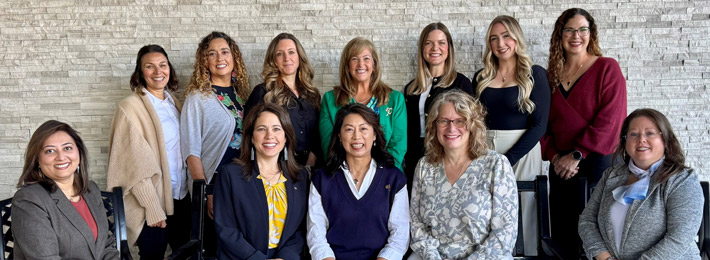
CDHA Board of Directors
To make the best use of CDHA's resources, our board uses a Policy Governance® model, a
proven decision-making system
that unlocks the potential of organizations. This system has provided us with strategic leadership,
clear
rules
on delegation, and a means of overseeing and evaluating the performance of our board. In addition, this
model
lends itself to the kind of big-picture thinking needed by CDHA to achieve its long-term objectives.
The CDHA Board of Directors is more than a body that reviews decisions and activities. It is a think-tank
for CDHA,
and that's where our board's visionary role comes into play.
The board remains focused on the
4 broad areas of need where outcomes
are required. These issues are addressed by the board through written policies to the CEO that describe
organization ends that need to
be achieved and situations that need to be addressed. Just as importantly, it describes situations and
actions that need
to be avoided. The board also helps develop national positions and standards for dental hygiene
practice, education,and
research. Through this work, CDHA serves both its members and the Canadian public more effectively.
President
Donna Lee, (she/they)
I am privileged to work, live and play on the traditional, ancestral, unceded Coast Salish Territories of the
xʷməθkʷəy̓əm, Sḵwx̱wú7mesh, and səlilwətaɬ Nations.
Immediate Past President
Alexandra Sheppard, (she/elle)
I respectfully acknowledge that I am situated in Treaty 6 territory, the traditional lands of First Nations and Metis
people
President-Elect
Wendy Wells (she/her)
Nova Scotia
Nova Scotia is located in Mi’kma’ki, the ancestral and unceded territory of the Mi’kmaq People.
Director
Paulette Dahlseide
Alberta
Alberta is located within Treaty 4, 6, 7, 8 and 10 territories and the homelands of the Métis Nation in Alberta. This
land is the traditional territory of many First Nations such as the Nehiyaw (Cree), Denesuliné (Dene), Nakota Sioux
(Stoney), Anishinaabe (Saulteaux) and Niitsitapi (Blackfoot).
Director
Tara Tait, (she/her/elle)
Saskatchewan
I acknowledge and respect that I live on Treaty 6 territory and the homeland of the Métis and First Nations people, and
I commit to working towards reconciliation.
Director
Kaleigh Warden, (she/her)
Manitoba
Manitoba is located on the original lands of Anishinaabeg, Ininiwak, Anisininewuk, Dakota Oyate, Dene and Inuit, and on
the National Homeland of the Red River Métis.
Director
Bev Woods
Ontario
Director
Tayyaba Fiaz, (she/her)
Québec
Indigenous lands of the traditional territory of both the Kanien'kehá:ka, “Mohawk,” and the Anishinabeg
“Algonquin,”
peoples.
Director
Nicole Mainville, (elle, she/her)
New Brunswick
I would like to acknowledge that the land on which I live is the traditional unceded territory of the
wolastoqiyik (maliseet) and Mi’kmaq peoples.
Director
Lori Martin (she/her)
Newfoundland & Labrador
I respectfully acknowledge Newfoundland and Labrador as the ancestral homelands of the Beothuk, and as the traditional
territories of the Mi’kmaq, Innu, and Inuit peoples.
Director
Heather Cassidy, (she/her)
Prince Edward Island
Epekwitk (Prince Edward Island) is located in Mi’kma’ki, the ancestral and unceded territory of the
Mi’kmaq
people.
Director
Rebecca Pollock, (she/her)
North (YT, NWT, NU)
Whitehorse Yukon Territory, where I live and work, is respectfully on the traditional territories of the Kwanlin Dün
First Nation and the Ta'an Kwäch'än Council.